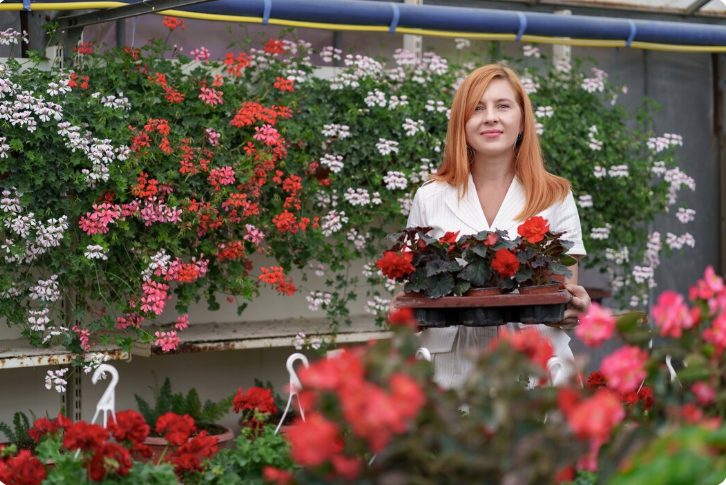
Tidy Shed, Happy Gardener: 10 Smart Garden Shed Organization Ideas

A cluttered garden shed makes every task harder. Tools get lost, supplies pile up, and finding what you need takes longer than it should.
A well-organized shed saves time, keeps gear in good shape, and turns gardening into a smoother, more enjoyable routine.
Shelves, hooks, bins, and clever layouts bring order to even the smallest sheds. Simple changes can turn chaos into calm.
Vertical storage clears floor space, while labeled containers make it easy to grab and go. Every item deserves a place, from gloves and seeds to lawn care tools and watering cans.
This list of garden shed organization ideas brings fresh inspiration to any setup. Some ideas use budget-friendly materials, while others add custom flair.
No matter the size or style of your shed, there’s always room for smart improvements. Clear the clutter, make space to work, and enjoy a shed that works as hard as you do.
Table of Contents
Toggle10 Ideas for Flower Garden
Flower gardens add beauty, color, and life to any outdoor space. They bring joy, attract butterflies, and create a peaceful place to relax.
You don’t need a large yard or big budget. A small area and a little planning are enough to grow a garden full of blooms.
These ideas help you design a space that feels fresh and full of charm. Each one is easy to follow and works for different types of homes and gardens.
Let’s explore these 10 flower garden ideas to make your outdoor space bloom beautifully.
1. Plant a Color-Themed Flower Bed
Pick one color or a group of matching shades. Fill the garden bed with flowers that stay within this theme. For example, choose pink tones like roses, tulips, and zinnias. Or go for blues and purples like lavender, salvia, and iris.
This style looks neat and calming. It gives a strong visual impact and feels more planned. Use different flower sizes and shapes to keep it interesting.
Image Prompt: A colorful garden bed with flowers in shades of pink, purple, and red; arranged neatly in a sunny backyard.
2. Mix Tall and Short Flowers Together
Use flower height to create depth and layers. Plant tall flowers like sunflowers or delphinium at the back. Place medium-height flowers like daisies in the middle. Add low-growing blooms like alyssum or pansies in the front.
This mix helps the garden look full and natural. It also allows sunlight to reach all plants.
Image Prompt: A layered flower garden with tall flowers in the back, mid-size flowers in the middle, and short blooms near the edge.
3. Add Flower Borders Along Pathways
Pathway borders lined with flowers give a warm, inviting feel. Use small and colorful flowers that stay low to the ground. Marigolds, petunias, and violas work well for this.
Borders guide the eye and create a clean, organized look. Try planting in rows or staggered patterns for variety.
Image Prompt: A stone pathway with neat flower borders on both sides, using marigolds, petunias, and low greenery.
4. Grow Flowers in Raised Beds
Raised beds offer good drainage, control over soil, and easy access for planting. Fill them with rich soil and group flowers by color or height.
Wood, stone, or metal boxes all work well. Add flowers like geraniums, snapdragons, or cosmos. Mix herbs or leafy greens for extra interest.
Image Prompt: A set of wooden raised garden beds filled with colorful flowers in rows, in a sunny backyard corner.
5. Create a Butterfly Flower Garden
Butterflies love certain flowers. Plant varieties like milkweed, coneflowers, zinnias, and black-eyed Susans. These attract pollinators and help the environment.
Add flat rocks for butterflies to rest on and small water dishes. Avoid pesticides. Use native plants if possible, since butterflies recognize them easily.
Image Prompt: A wild-style garden filled with bright flowers and butterflies flying around, with a few rocks and shallow dishes in view.
6. Design a Circular Flower Bed
Circular flower beds work well in open lawns or as centerpieces. Plant tall flowers in the center and move to shorter ones as you go outward. This shape lets the garden stand out from all sides.
Use colorful flowers like dahlias, asters, or pansies to make it bright and lively.
Image Prompt: A round flower garden planted with layers of colorful flowers in a green open lawn, viewed from above.
7. Use Containers and Pots for Small Spaces
Small yards, patios, or balconies can still bloom. Use pots, planters, and hanging baskets. Mix flower types for color and texture. Use bright pots to add extra charm.
Try petunias, begonias, or geraniums. Move pots as needed to catch sunlight or protect from rain.
Image Prompt: A small patio with flower pots and hanging baskets, filled with blooming flowers in bright containers.
8. Plant a Wildflower Garden
Wildflowers give a natural, free-flowing look. They need less care than other gardens and support local bees and butterflies. Spread seeds over cleared soil and water until the flowers grow.
Try mixes with poppies, cornflowers, yarrow, and daisies. This type of garden changes with the seasons and feels alive.
Image Prompt: A large open area filled with a variety of wildflowers in bloom, with bees and butterflies flying around.
9. Use Flowers to Fill Empty Garden Corners
Empty corners can feel dull. Fill them with blooming plants. Use tall flowers or large leafy plants in the back corner. Add trailing flowers like nasturtiums or lobelia around the edges.
This trick brings color to unused space and makes the whole garden feel complete.
Image Prompt: A backyard garden corner filled with flowers in layers, using bright blooms and trailing vines over a fence or wall.
10. Add Flower Edging Around Trees
Trees often have open space around them. Use that area to plant flowers that enjoy some shade. Hostas, impatiens, and begonias work well.
Arrange in circles or flowing shapes around the base. Add mulch to keep soil moist and stop weeds.
Image Prompt: A tree surrounded by a circle of colorful flowers planted in a neat border, with mulch on the soil.
FAQs
What flowers are easiest to grow for beginners?
Marigolds, zinnias, pansies, and petunias are easy to grow. They bloom fast and don’t need much care.
How much sun do flower gardens need?
Most flowers need at least 6 hours of sun each day. Some flowers can grow in part shade.
What’s the best time to plant a flower garden?
Spring is a good time to plant. Wait until the last frost is gone. In warm areas, fall also works for some flowers.
Can I grow flowers in containers only?
Yes, many flowers grow well in pots. Make sure the containers have holes for drainage.
How do I keep my flower garden blooming longer?
Water regularly, remove old blooms (deadhead), and feed the plants with flower food. This keeps flowers healthy and growing.
Conclusion
Flower gardens bring color, beauty, and peace to your space. You don’t need a big yard or perfect soil. A few good ideas, some planning, and the right flowers can change any area into a blooming spot.
These 10 ideas offer ways to make the most of what you have. Mix tall and short plants. Use containers or raised beds. Fill empty corners or circle a tree with flowers.
